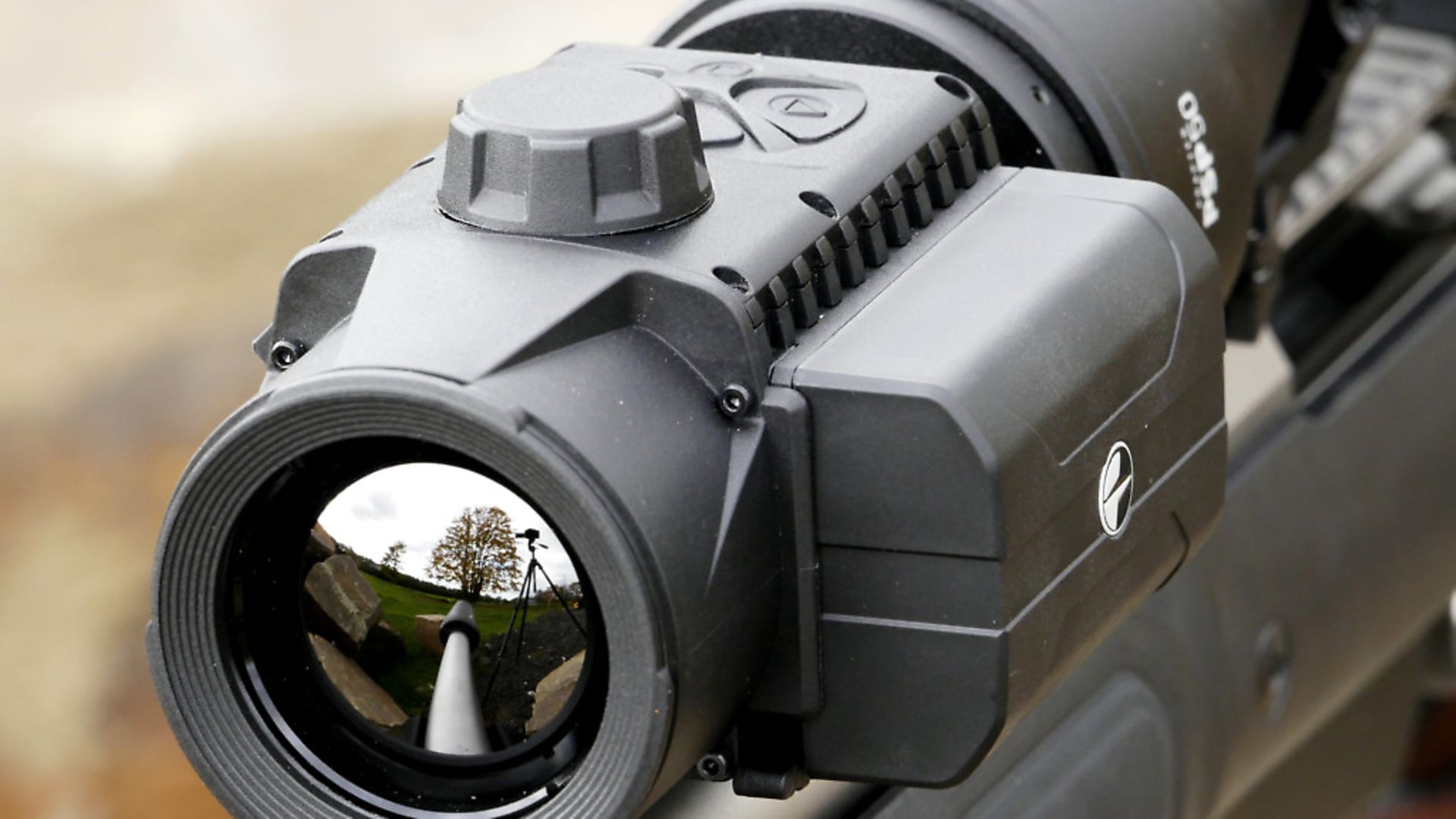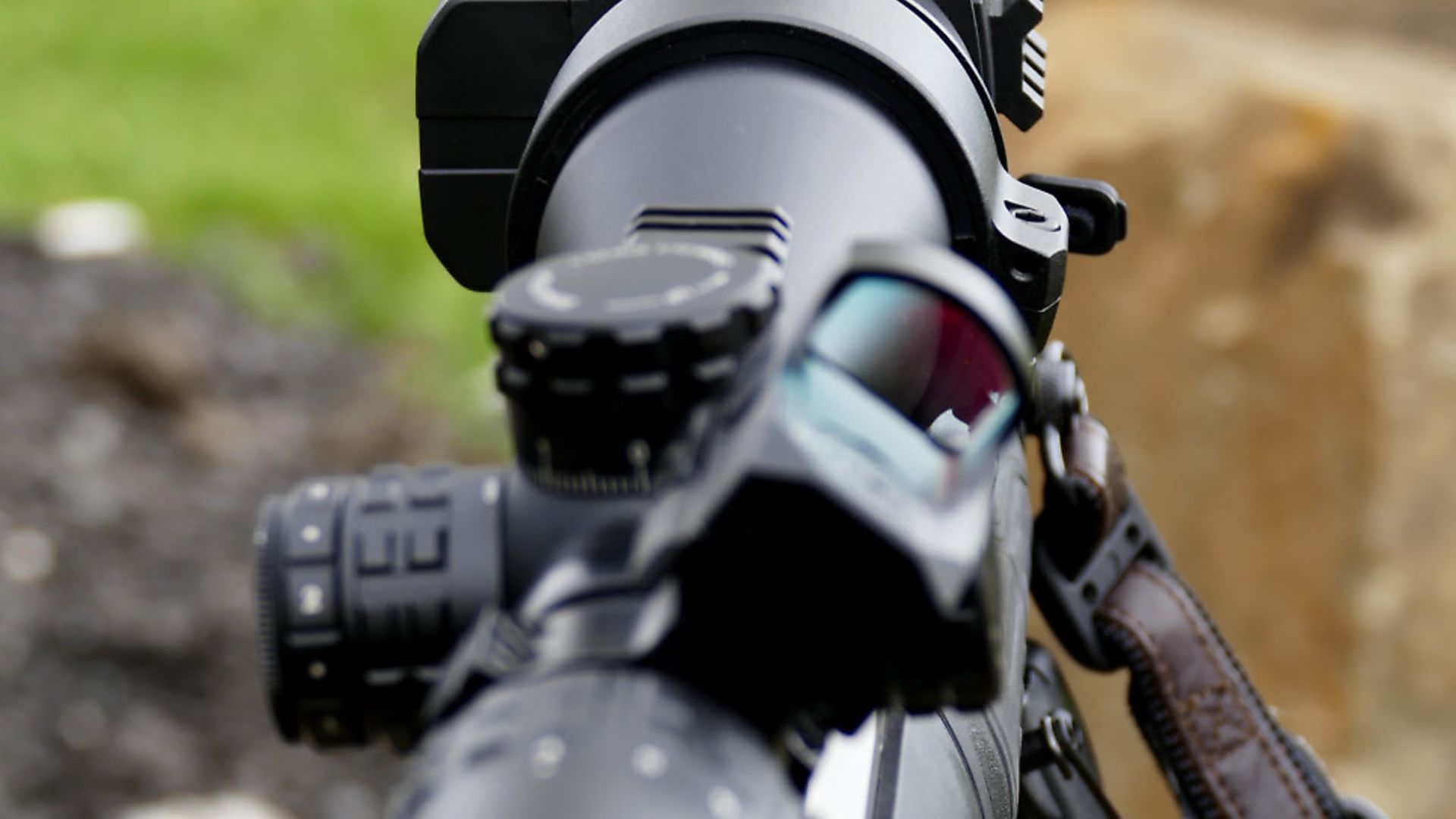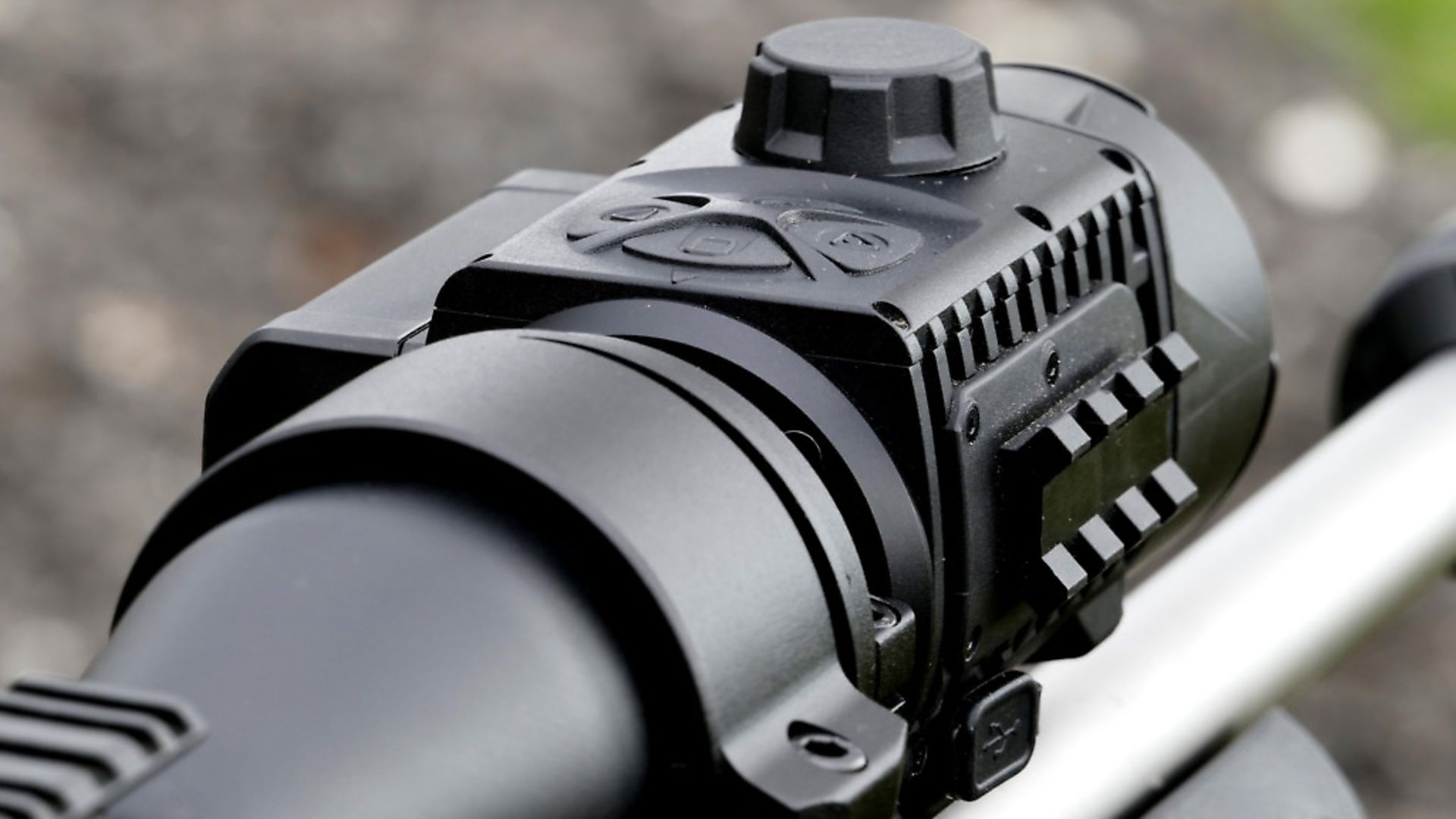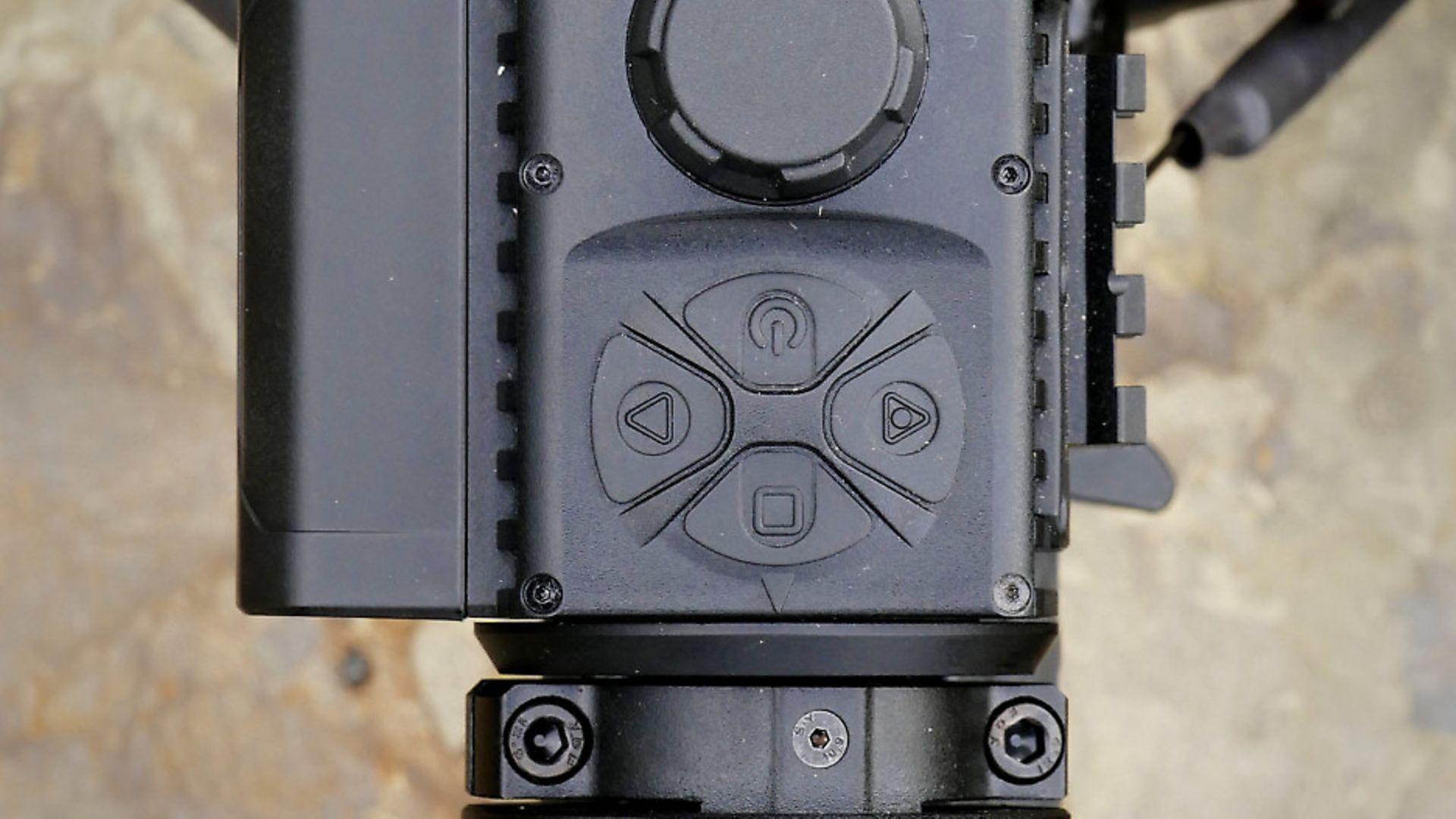Paul Austin looks at the latest release from the biggest name in thermal - Pulsar’s new Krypton XG50 front-mounted thermal!
 credit: Archant
credit: Archant
The landscape has changed for Pulsar of late. With high-tech sensor manufacturers such as IRay and HIKVision attempting to cut out the middle man and bring thermal products directly to the market, Pulsar now face stiff competition in a sector that was pretty much all theirs.
It’s great news for the consumer, with competition driving innovation and reducing prices. Pulsar are not just sitting on their hands and waiting for a wave of Chinese imports to wash them away. Never overly keen on discounting, they’re clearly looking at innovation as a means of maintaining their position, as the thermal market continues to heat up.
We have two products to explore. First up, in this article, the all new Krypton, which boasts a new 12mk, 640x480 V2 (<40MK NETD) sensor, recently incorporated into the V2 versions of Accolade and Helion spotters. It’s a front-mounted thermal that can transform a day scope into a high-tech hunter in seconds. Next up comes the latest Axion XQ38 LRF, a pocket-sized thermal spotter with a built-in rangefinder which we’ll cover in the next article.
While I’m not going to go into every nook and cranny of each device, I can guarantee that Pulsar’s user interface, features and navigation system are still the best in the business – and effortless in terms of useability. Essentially, if you’ve used any Pulsar product, you can drive them all without any real difficulty, which is quite an achievement when you consider the variety of products on offer in the range.
It’s all very intuitive and sensible: the short and long press combinations drive navigation and selection, and all the relevant features are stacked logically and accessed instinctively via the combination of buttons and jog dials. Perhaps the biggest slap on the back I can provide is that, over all the years I’ve been reviewing Pulsar gear (both NV and thermal), I don’t think I’ve ever had to reach for the manual.
That said, we’ll obviously be looking at all the key features and new additions. So, without further ado, let’s crack on with the first bit of kit - the new Krypton.
Krypton
The Krypton is available in two flavours, the XG50 and the FXG50, the former being the unit I had on test. The difference between them is that the XG50 ships with a monocular attachment, which transforms the device into a 5x30 thermal spotter. This add-on adds just £130 on top of the £4,000 price of the main unit. An on-scope thermal plus a hand-held spotter for just £130 more – it’s a no brainer really.
My experience with the Krypton is perhaps a perfect illustration of what gives the unit its appeal. The XG50 with its monocular add-on arrived first, as the scope clamp was slightly delayed. This gave me time to have a play in monocular mode. It has built-in video and photo capacity and 16GB of internal memory alongside. There’s also wifi connectivity to the StreamVision app – all the high-end connectivity and features you’d expect from Pulsar. The fixed mag of 5x does make the FOV a little tight for some applications, but a 640x480 12um sensor in any monocular isn’t exactly a bad thing.
A few days later, a lovely Zeiss Conquest V6 arrived to accompany the XG50. The unit itself is optimised for day scopes with 1.5-6x magnification. Scott Country assure me it’s perfectly happy around 3x at the low end – the supplied Conquest being a 2-12x50.
Now this is starting to get a little frustrating. I have the thermal, I have the scope and I also have a trip in the next few days with some late season roe buck on the menu, followed by a spot of afterhours foxing – a perfect test for the Krypton. The Zeiss and XG50 (in monocular mode) can take care of the deer during the day, and then the thermal can go on the scope for the foxing session.
Worse still, I have a Hawke Frontier 4-20x50 sat on my .243 and the pairing are shooting beautifully at present with regular ½” groups, using Federal Premium 75gr ammo – a partnership which, I’ll be honest, I’m fairly loathed to break up.
True to form, the clamp arrives on the day of the trip, and there’s no time to zero the Zeiss. Sod it, it’s time for some real-world testing. I neither have the time nor the inclination to swap scopes and re-zero at this stage, so I fit the clamp and thermal to the Frontier, have a quick check and I’m off. Sadly, we end up running too late for the deer, but the foxing is still on.
 credit: Archant
credit: Archant
Basic set-up
I tweak the settings on the XG50 and I’m ready to shoot. Although it’s a very high-tech device, set-up is simple: just add the appropriate spacer and clamp on the newly fitted collar to the day scope and you’re off. Some of the interface does get obscured at higher mag, but I could still drive the carrousel style menu system quite easily at the 4x base mag of the Frontier.
The main unit screws into the collar to make a solid bond, and there’s a secondary adjustable mounting ring that allows you to perfectly centre the two optics. All controls are handled via a four-button array and the adjacent jog dial – it’s all very painless and very Pulsar.
As your day scope still handles the mag, all you really need to do is to adjust focus via the jog dial. It’s a bit of a reach on a longer scope, but perfectly manageable once you get used to it. Like all other Pulsar thermals, you have four image-processing/environmental modes, brightness and contrast adjustment. There are no colour modes in this case, though you can toggle between while hot and black hot. Oddly enough, given its cutting-edge tech, in many ways, it’s quite a simple device.
Before returning to my little tale, there’s one quite intriguing addition to the XG50 that deserves a mention: a Picatinny rail with a small USB style port beneath on the side of the unit. A thermal doesn’t need a torch, so why add a Pic rail to the device? Could we be looking at a bolt-on LRF add-on in the near future?
Anyway... the thermal is now set up and on the scope. We’re finally out on the land. After a good deal of searching, our second fox of the evening appears at 176m, and I’m and ready to take the shot. A perfect broadside presents itself, and I dial up the scope to about 8x. After adjusting the focus, there was absolutely no doubt it was a fox. I squeeze the trigger, and it drops like a stone. The retrieve reveals no change of POI and a perfect heart/lung shot off the bonnet.
What can I say, it works and it works well. The image quality is excellent, and I have a decent amount of mag available – even using a scope that wasn’t the ideal candidate for the job. I still have concerns about using thermal only (spotter & scope) at extended range. And I must admit, I did appreciate having another shooter alongside with an IR rig just to double check IDs at extreme range.
 credit: Archant
credit: Archant
Justifying the investment
Obviously, the elephant in the room is the asking price. At £3,999, it isn’t cheap, but I think this little tale illustrates the appeal. If you have a day set-up that you’re intimately familiar with and loathed to change, the option to ‘go thermal’ in a matter of seconds is very attractive.
The alternative for anyone who doesn’t like to swap scopes is to build yourself a dedicated thermal/NV rig. But if you factor in the price of the rifle, a dedicated thermal scope and all the associated extras, suddenly £4k for a thermal add-on that can transform your existing rig in seconds doesn’t seem that excessive.
 credit: Archant
credit: Archant
TECH SPECS
5x30 Monocular Included
Optimised for 1.5x-6.0x day scopes
Sensor size: 640x480
Frost-Resistant HD AMOLED display (1746x1000)
IPX7 rated
Magnesium bodyshell
 credit: Archant
credit: Archant
Operating temperature (-25°C to 50°C)
High shock-resistance (6000 joules)
Image Boost Technology
50Hz refresh rate
Power save display off mode
Auto-Shutdown
Four observation modes
 credit: Archant
credit: Archant
Three calibration modes (Manual, semi-auto, auto)
Built-In video recorder
Video with Audio/Picture recording
16GB internal memory
Stream Vision compatible
IPX7 battery pack included
Attaches with PSP Cover Ring Adaptor (available separately)
![[Optional opening group shot Trev]](/resource/image/8103980/landscape_ratio16x9/1920/1080/453f2edcc1a023e052b5a0f76de0cb10/gF/krypton12-ee864f89.jpg) credit: Archant
credit: Archant
Product: Pulsar Kypton XG50
Supplier: Scott Country International
Price: £3999
 credit: Archant
credit: Archant